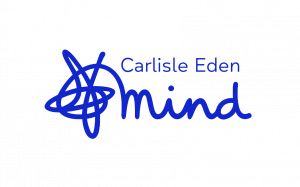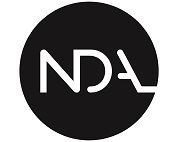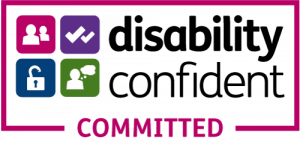The relationship between workplace stress and role clarity. – an article by Chris Graham (views expressed employees own)
Recall back to when you were 15 years old. How clear were you about your identity?
Did the culture of the community where you were brought up shape who you were?As feelings of attraction were growing stronger, was your sexual orientation also moving into sharper focus? With hormones now changing your physical characteristics, was it becoming obvious how you are expected to behave in regard to your gender?
These are some of the building blocks that shape our role in the society we live in.
As secondary education is nearing the end, another question needs answering. What do you want to be in life? More specifically, your work role. Some early in life, have a deep-rooted feeling what their work role will be. Whilst others just don’t know. When you first meet someone, the first thing they tend to want to know about you is what work do you do. This information automatically is used to privately judge who you are. Your work role as part of your identity, is very important.
Stress appears at your workplace when your work role suddenly or gradually over time, becomes unclear. It can feel like the rock-hard ground you are standing on has melted away, leaving you treading in soft, sinking sand. Why should you feel unhelpful stress when your work role becomes blurred or just vague? If you passionately followed Newcastle United football club and I asked you to walk into your workplace with a football Sunderland scarf and hat on, how would you feel? Imagine you have been threatened by the loss of your work role. The more you love your job, the greater the negative impact.
Ask yourself: how much do you like your job?
• Does the work you do, give you a lot of satisfaction?
• Do you know what you need to do which achieves the output desired from the company?
If the answer is broadly yes, then it is likely that you want to perform well, completingwork tasks with pride. If you like the specific work role you have at the moment, it will give you a feeling of meaningful achievement. You will experience pleasure fromyour performance results. Stress is absent. You will get pleasure in getting “almost perfect” results. That satisfaction of “job well done” confirms your work role identity.
Have there been times in the past, when that did not happen? Reflect back and think about how it made you feel. Did you feel stressed?
When unexpected change happens at work or your usual way of working has been disrupted. You may feel negative pressure to modify your work identity in order to be listened to and accepted. Rather than just being who you are and behaving in ways you would prefer to do normally; you now have to work hard to find a new work role that would be accepted by your manager and the team you work with. When role clarity disappears, you may feel vulnerable which pushes you to rethink your own work-related identity. Self-doubt triggers fear and confusion, so you experience stress. You may start to doubt your overall identity. For many that personal identity may already be fragile. Gay, lesbian, bisexual and transgendered employees frequently struggle to make sense of their identities anyway, often feeling shame, ambiguity and anger.
Shifting or defending a work identity role is an emotional process which can be quite negative because of your need to reconcile those negative identity tensions. When people have successfully constructed new and coherent role identities, stress melts away replaced by positive emotions of joy and work satisfaction. However, if people fail to rebalance their work role, this leads to shame, a sense of weakness and feelings of loss.
Imagine, things have now changed at work. Your work role feels unclear in regards what you are responsible for. You have lost the sense of what your work role is in relation other work roles in the team you work in. What you do feels confusing. The end work result is now actually unknown. You feel your work role has disappeared. It’s like a loss, a form of grieving. There is a strong urge to find it, but it has been lost. This triggers stress. Let’s explore more deeply our work role by looking at what James a semi professional actor experienced.
James was often used by TV production companies for character roles in TV dramas. Becoming an actor is often an arduous process. You need to know whattypes of acting roles you feel comfortable playing and how they fit into a productionscript. Just like a workplace role, actors often have an ”acting type”. An actor’s type criteria makes more clear the roles they are best suited for.: Gender: (male, female, or non-binary), Age range: (determines the characters they can convincingly portray). Physicality: (height, weight, appearance) Job title: (lawyer, cop, spy, teen, or criminal) Personality traits: (serious, intellectual, loud, innocent). James knew understanding his acting type is essential because it helps him package himself effectively for casting directors. Discovering his acting type involved knowing what characters he could perform effortlessly. He understood his unique qualities: thequirks, voice, and demeanour that contribute to his acting type. Think of Jame’s acting type like your own work role.
James struggled in his recent acting role. A recurring role of a TV character who appears in multiple drama episodes. Although he had read and learnt the script, in which his character appeared in quite a few scenes, he felt significantly more stressed than usual. The director did not offer much character detail for his part. The script gave few clues. He was expected to “flesh out” his character role. Just like “writers block” when you are unable to think of what to write, nothing came to mindfor James. His first few takes were criticised by the director as “wooden”. The character role lacked meaning. James could not project with clarity. James tried to seek more direction from the director. It reminded him of the part time job he did to keep income coming in when he was not working as a professional actor.
Gallop has found that only 1 in 2 employees strongly agree that they know what is expected of them at work. That’s 50% of us, are unsure of what work we are doing. When you are confused about your work role, it can affect your ability to get your work done and trigger stress.
For your work role to be clear, you need to understand what you need to accomplish and how your work contributes to your company’s objectives. Most of us work in teams. That means having a clear understanding of the team’s work objective. More specifically, your contribution to that work goal. Role conflict within a team, confuses their roles. That can happen, for example when there is role overlap. Two people trying to do the same job. Duplication of effort between roles which can cause friction in the team and affect productivity.
James worked part time, when not working as an actor, in a team of waiters in a busy restaurant. The front of house manager has not made it clear to the shift team exactly what are their precise responsibilities. Stress appears for James, when a colleague says to him “that’s not my job”. James thinks “OK, who does the drinks ordering sit with?” At other times, colleagues would say “I thought you are responsible for the organising of customer payments?” Janes had believed that it was the responsibility of the senior waiter. It was fine in quiet times but when all tables are full, everything seems out of place, so stress builds up inside of James. This was just like he felt in front of the TV crew.
Role ambiguity can be a major source of stress in the workplace. Double handling of work or overlapping of task, not only causes inefficiency but unhelpful stress further produces work output inefficiency. If you thought about your job role and responsibility, can you list your primary responsibilities and tasks associated with thatrole? Are there any tasks that seem unclear to you?
Work goal alignment is when your company helps correctly match employees to the responsibilities that suit their strengths and skills.
• Do you understand how your role contributes to your organisation’s overall business objectives?
• Are you aware of business key performance targets?
• Does your role directly contribute to the success of the organisation?
Setting work role boundaries involves establishing personal goals and limits that you make clear with your colleagues. These rules and limits prevent the lines between you and other members of the team from becoming blurred. Are you clear on your work role boundaries?
• Do you know who you should collaborate with, which will help you fulfil your responsibilities?
• Are there any overlapping responsibilities that run the risk of role conflict?
• How clear are you on your line manager’s performance expectations of you?
• Do you know the quality and quantity of the work expected of you?
In the busy restaurant times James worked in, all was not good in the kitchen as well. The waiter team’s efficiency depended on the kitchen staff producing a plate of food within 15 minutes of the table order. ‘Chef’ is not a one-size-fits-all term. In the kitchen, there are many chef roles in terms of responsibility and tasks. All have one common aim: to produce a plate of food on time cooked to the standard, this restaurant is publicly known for.
At the top of the tree is Head Chef Fran, who is responsible for the running of the kitchen. The owner of the restaurant Peter is feeling stressed. The trading income has significantly dropped. There is a net trading loss every month. Trading debt is accumulating. He privately meets Fran, telling her that the food expenditure has tobe cut. The menu prices must not change as that level income is vital to rebalance the profit and loss accounts. This means sourcing cheaper ingredients. Theconversation leaves Fran confused from a role perspective. As a chef, she prides herself on enthusing the kitchen team to produce plates of food that are stunning to look at and tastes sensational. Fran is exposed to “role confusion”. She feels lost. Her motivating reason for being a head chef has disappeared. Role confusion causes stress because your sense of self feels under attack. You are unsure of your work role and how you fit in with other roles in the team.
Fran, as a result, finds it difficult to think clearly and quickly. Paying attention and making decisions are a problem. So she decides to speak to Tom who is her sous chef and let him make the decisions. The Sous Chef or Under Chef, is second in command of the kitchen. They take on much of the responsibilities of running the kitchen as the Head Chef has a more overarching role. They direct how food is presented on the plate and food quality control. Tom has to cut his food budget by 15%. He must organise the staff to prepare and cook meat from cheaper cuts and vegetables that are prepackaged frozen. Fran is expecting to see the same quality meals as before. Tom feels he now has two competing work demands to perform well: poorer quality food ingredients but cooked to the same high customer expectations. These two work role demands feel incompatible to Tom. A role conflict has emerged. He feels pulled in two directions. Stress has appeared as he tries manage his team and respond to both these two roles: cost role and quality role. This is an inter role conflict. He knows that his team cannot comply with both objectives in the time needed to take the order to the meals being served on time. When you are asked to perform contradictory roles, stress appears, if those roles oppose each other or they are incompatible or there are so many multiple of roles, it affects your work performance. In any large restaurant workplace, there are many different work tasks needed in the kitchen to be performed in the right cooking sequence and time duration, so that the plate of food can be served within a reasonable customer waiting time.
If I asked you to took back to the days of lockdown and covid 19, were you at any time, overwhelmed by uncertainty? Will I get the virus? How will it affect me? How long do I have to isolate myself? When will we get back to a normal life? The way to cope was to create a daily and home routine. The same applies to role uncertainty.
As human being, we are hard wired to make personal sense of what is happening to us in our lives. When we cannot make clear meaning, the adverse stress feeling appears. When it feels unclear what you should be doing, that acute stress feeling is transformed into longer term stress as role uncertainty digs its heels inside you. As certainty at work fades away, your stress response is “kicking you” into action to get you back into safety.
Tom supervises two chefs (de partie) who are responsible for running different sections of the kitchen. John is responsible for the meat dish preparation and cooking whilst Jan is responsible for fish dishes. They have been told by Tom that the meat will be from different cuts of meat and the fish will now be frozen at source. They both experience role ambiguity as they adapt their cooking style and methods. Role ambiguity is when there is a lack of predictability in the cooking tasks they were asked to do. Both feel a lack of certainty in the methods need to cook the meals. As a result, they have lost their confidence in being able to predict the sequence of tasks needed to reach the end goal of a “ready to serve” plate for food. They both work hard but feel stressed. This worsens when Tom tells them it is wrong “scrap it and start again”, as time pressure builds up inside them. After a week, Tom sits them down and says “the quality is not good enough, a number of customers had to wait a long time”. He does not give specific constructive feedback. The lack of information from Tom on how to perform well, further fuels role ambiguity and those uncertainty feelings of stress remain with them.
Tom goes back to Fran and updates her on what is happening. They download the Health and Safety Executive Talking toolkit of stress and role clarity. Fran asks Tom to meet John and Jan and ask the following questions:
• Do you feel clear on what your de partie chef responsibilities are? If they are not clear, could you explain?
• Are you clear on what your performance cooking objectives are and what success looks like for you?
• Do you feel that they are achievable given the 15 minute time: from meal order to plate serving?
• Do you feel you understand how work is structured in your area of responsibility of meat and fish dishes and the wider restaurant operation standards?
Fran asks the same questions to Tom. All their answers were revealing.
Fran meets the owner Peter. Together they work out a business plan which still aims to become profitable but this time, each work role, is more clear. The menu size was improved and simplified with fewer choices, which allowed the purchase of fresh ingredients, premier beef cuts and more time spent on cooking amazing plates of food. The kitchen team now understand their work roles so work more in harmony with each other. The waiter team was also given more specific roles including customer drinks and payments. Their tips size increased. Customer feedback was positive. The restaurant trading climbs back into profit.

















